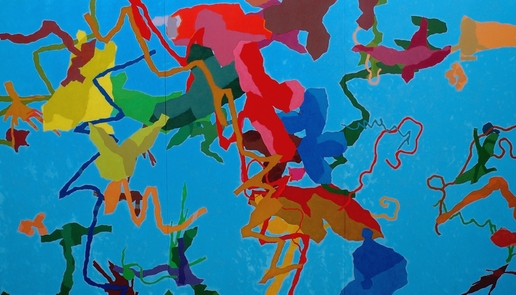Reflections on designing and building Aaron
 Harold Cohen
Harold Cohen I learned from Harold that you can be a highly productive and internationally recognized visual artist with years of experience, practice and reflection on visual art and design, and still don't understand why this shape or this line does not look right in that particular place on a white sheet of paper. When Harold LOOKED at what he called "upside down scallops" that he just drew, he KNEW this was not right, but he could not explain why.
He told the story of his long neuroesthetic quest to understand the visual language: he initially looked for "cognitive primitives", not finding them. He then reflected on the appearance of things: is it simply what they look like, or does it purely emerge from the physics of vision, or can a computer get it? And there he was, back to square one. He tried a new direction again: the initial scribble that children draw, that they then enclose in a closed form, that eventually becomes a face. Harold thus decided to draw things from inside.
I think Harold will never end his quest. I found his persistent curiosity and creativity highly inspiring.
Below is one my favorite paintings of Harold, from his website. There are a few "scallop shapes" here and there if you look closely, but they are all in the "right" position!
I think Harold will never end his quest. I found his persistent curiosity and creativity highly inspiring.
Below is one my favorite paintings of Harold, from his website. There are a few "scallop shapes" here and there if you look closely, but they are all in the "right" position!
This is part of a series of posts on the 11th International Conference on Neuroesthetics (September 2014).


 RSS Feed
RSS Feed